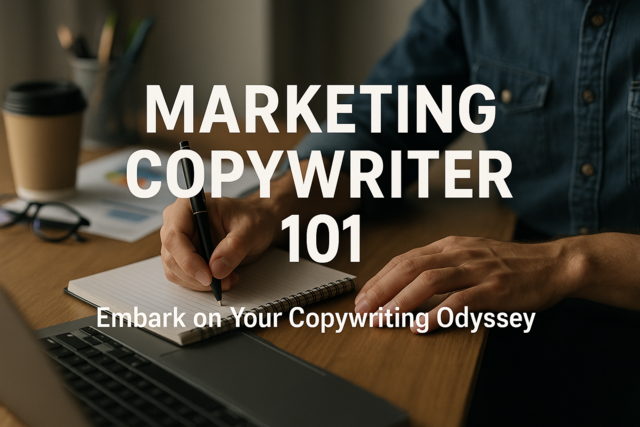The Narrative Paragraph The purpose of a narrative is to tell a story. A narrative paragraph is a paragraph-long story. The opening sentence makes a general statement that lets the reader know what the story of the paragraph is going to be about.
|
Keep these tips in mind when writing a narrative paragraph: 1. The paragraph should begin with an introductory sentence that catches the reader's interest. 2. The details need to be in chronological order --that is, the order in which the events occurred. 3. You need to use narrative details and vivid descriptions to enliven the paragraph. |
The following narrative paragraph has all of the above elements:
|
The FBI agent followed the suspect into an abandoned building. He pushed open the door a crack and scanned the room before entering. When he saw a shadow in the corner, he quickly backed up against the wall to present a smaller target. He waited until he was sure he hadn't been seen, and then stepped into the center of the room. A search of the perimeter of the room didn't reveal any hiding places, so he cautiously crept up the stairs, gun in hand. A creaking step made him pause again before completing the climb. The agent was beginning to think he'd somehow mistaken what he'd seen, when a slight sound at the window alerted him to movement. He dashed over and cursed as he looked down. The suspect was getting away on the fire escape. |
The Descriptive Paragraph
A descriptive paragraph gives a snapshot in words. It can describe a person, place, thing, or event. You will most often use a descriptive paragraph within a story to give readers more of a sense of experiencing the story fully. You can describe a beautiful woman, a beat-up car, a sunset, or the garden in your back yard and make any of them interesting and very real to your readers by using the right words.
The most essential thing to keep in mind with a descriptive paragraph is to keep it vivid and colorful. Action verbs, adjectives, and adverbs will all give depth to a descriptive paragraph. Choose your words carefully when you write it; do not settle for using boring or typical words. Search your mind for descriptions that are unusual and evocative of a mood or feeling. Any words that appeal to the senses, such as sight, smell, sound, touch, and taste, will help in a descriptive paragraph.
Start a descriptive paragraph with a sentence that alerts your reader to what you will be describing, then use the remaining sentences to provide the details. In the following descriptive paragraph, watch for the descriptive words and phrases, paying special attention to any that relate to the senses.
|
Amanda remembered the night she got engaged vividly. The stars that night were brilliantly twinkling, casting a warm, shimmering glow over their faces. It was one of those late summer evenings when the breeze from the ocean was cool and soft, playing with the tendrils of her hair as they walked on the beach. The crashing of the surf was a steady, lulling murmur that relaxed her mind and soothed her spirit. Her boyfriend seemed to sense her mood, content to quietly hold her hand without talking. She loved the rough, strong feel of his skin where their fingers were intertwined. It was one of the most peaceful evenings she had ever experienced. |
Notice that the descriptions of the elements in this scene are in a logical order. First, the stars are described, then the ocean and ocean breezes. The final details are about the person she was with. Clustering sentences in this way makes it easier for readers to reconstruct the scene in their minds. You can, as in this example, move from the distant to the close-up, or work in reverse, depending upon the effect you want to create. If you are describing a place that you are moving through, you can also choose to describe things in chronological order, describing things as you would see them within the scene.
The Expository Paragraph
Expository paragraphs explain rather than describe. These kinds of paragraphs are usually found in informative publications like textbooks, newspapers, and reference books.
Expository paragraphs tell how to do something, what something involves, or why something happens. They are either informational or explanatory.
The order of the information in an expository paragraph should be put in whatever order will make the information clearest to the reader. For paragraphs explaining how an event occurred, chronological order is usually the clearest. If you are providing a series of facts about an object, you have a bit more freedom, although traditionally writers put the most crucial fact first, for clarity, or last, to provide the climax of the paragraph. The crucial ingredients of expository paragraphs are facts and reasons.
Some topics for informational paragraphs might include:
- the school's semester schedule;
- things I like about Christmas;
- a job description;
- bad blind dates I've had.
Some topics for explanatory paragraphs might include:
- how to prepare for a camping trip;
- how to plan for your retirement;
- how to bake chocolate chip cookies;
- why the abandoned school is dangerous;
- why I want to get a nursing degree.
Read the following expository paragraph. Look for the facts or reasons that support the topic sentence.
|
A legal assistant's duties are numerous and varied. He or she is responsible for preparing several different types of legal documents and making sure the appropriate attachments are included. Their mornings are usually dedicated to scheduling appointments and making phone calls for the attorney who employs them. Other duties can include research at the law library, taking notes, and interviewing new clients. In any given week, a legal assistant might work on documents for both criminal and civil court. |
Notice how the paragraph gives specific information: the particular duties involved in being a legal assistant. There are fewer descriptive words in this type of paragraph because you are imparting information, not trying to evoke a feeling.
Understanding how expository, descriptive, and narrative paragraphs should be written will improve your ability to clearly get your point across, whether you are trying to reconstruct a moment, evoke a particular mood, or educate your reader.
|
If you would like to study some additional examples of paragraphs, look in pertinent types of books. There will be lots of expository paragraphs in cookbooks, how-to guides, and manuals. Descriptive and narrative paragraphs can be found in novels, short stories, and essays. Narrative essays are the foundation of newspaper articles and news reports. |
Point of View
Point of view is defined as the angle at which the viewer sees objects or scenes. The point of view that you choose in your writing will depend on what you want to accomplish; your story itself; and, in the case of fiction, how much influence you want a character to have over each scene. Although some writing books claim there are 26 points of view that can be used, there are only three basic approaches: first person, third person, and omniscient. All other points of view stem from these three and are no more than combinations of them. That said, the basic three are all you need to know when you write.
First Person Point of View
Writing in first person means speaking in the "I" voice. Everything is told from the first person perspective. Take a look at an example below:
|
"Give me that book!" I told Jasmine. She smiled and jerked it away right as I reached for it, knowing that I wasn't in the mood for games. My assignment was due when class started in 10 minutes. If I didn't get it done, I'd flunk. "You should have done your homework last night," she said. A grin tugged at the corner of her lips and her dark eyes shone with mischief. She didn't care that I didn't do the work; she was just getting a kick out of watching me sweat. |
As in the example, the first person point of view lets your readers into your character's mind. You can make the reader feel what your character is feeling, see what the character is seeing, and be influenced by your character's thoughts and opinions.
It seems easy to write in the first person point of view because you can easily portray your main character that way. However, first person point of view might be one of the hardest to write from, because you are very limited in what you can write. Since you are only writing from the perspective of one character, you cannot give insight into other characters' thoughts or feelings. In essence, what you gain in personal insight is lost in perspective. In addition, your character must be strong and interesting enough to hold the reader's interest, but not so eccentric and bizarre as to be unbelievable or unlikable.
Another problem with first person is that you limit your ability to let your readers get to know other characters intimately. You can create different scenes with different characters' first person point of view, but that can become difficult for a newer writer and confusing to your readers. It is highly recommended that writers planning to use the first person point of view of many characters first study some experienced, respected novelists to learn better how to do it. A good example is Sol Stein's The Best Revenge.
Use the first person point of view when:
- You want to tell a story from yours or a character's perspective.
- You want to show thoughts, opinions, and feelings of one character or narrator.
- You want to create intimacy between your readers and a character or narrator.
- You want to bring your readers inside your character or narrator's head.
Do not use the first person point of view if:
- You need to show several perspectives.
- Your character is not strong or interesting enough to carry the first person point of view.
- You want to show things that are not the perspective of your character, who is telling the story.
- Your story can be better and more effectively told through another point of view.
- It seems easier to give a firsthand account. It is actually harder to write a good story in first person than in the other points of view.
The most common mistake editors and publishers find with stories written in first person point of view is the inability to keep it in first person. While flopping back and forth between points of view is fine, editors and publishers know when the switch is intentional and when it is the mark of an amateur. It is easy, in the process of writing, to accidentally jump out of first person, but you must know the rules and characteristics for first person so that you can go back and correct your errors when you edit.
Look at the examples of first person point of view below, and notice the errors that are underlined. The underlined segments are places where the writer jumped out of first person by mistake.
|
"I don't like her at all," I said to Jeremy. I watched him as he rolled his eyes and busied himself by rolling a cigarette between his first finger and his thumb. It was his way of not answering, because he knew I wouldn't like what he had to say. He knew I didn't want to hear how much he did like her. "Yeah, I noticed that," he finally said after a few minutes. Jeremy let out a deep breath. "You don't have to, though. It's not your choice, Jen. It's mine." "But I have good reasons. Marriage is a big commitment. It's the biggest. I just want you to think about it before you rush into anything." "I have thought about it. I haven't slept in three days thinking about it." He shoved the cigarette back in the pack. Damn, he knew she was just looking out for him, but he also suspected she secretly wanted him for herself. Her concerns were valid. He'd give her that. However, he couldn't help but think she was harping on them so he'd break up with Tamara and be with her instead. "I just don't want you to be unhappy, Jere. If she makes you happy, then I'm all for the wedding. I'll even be a bridesmaid like she asked me to be. I just want you to be sure Tamara is the woman who's going to make you happy," I said. "That's all." Deep inside, I knew she wouldn't. She couldn't possibly because there wasn't a human being alive who loved Jeremy as much as I did. I reached out and touched his hand. If there was any way possible, I'd stop this wedding dead in its tracks. He had to realize how much I loved him, and how much that witch Tamara didn't. |
Notice how the scene starts out using the character Jen's point of view, but switches to Jeremy's in the fourth paragraph before switching back. This shift was unintentional on the part of the writer and very easy to do, but it can also be very confusing to your readers. As said earlier, first person limits the different perspectives that you can give your readers. It may also restrict what you can reveal to your readers. Taking out Jeremy's point of view in this scene takes away the reader's insight that Jeremy has caught on to Jen's true intentions. Just take a look at the edited version.
|
"I don't like her at all," I said to Jeremy. I watched him as he rolled his eyes and busied himself by rolling a cigarette between his first finger and his thumb. It was his way of not answering, because he knew I wouldn't like what he had to say. He knew I didn't want to hear how much he did like her. "Yeah, I noticed that," he finally said after a few minutes. Jeremy let out a deep breath. "You don't have to, though. It's not your choice, Jen. It's mine." "But I have good reasons. Marriage is a big commitment. It's the biggest. I just want you to think about it before you rush into anything." "I have thought about it. I haven't slept in three days thinking about it." He shoved the cigarette back in the pack, shook his head, and let out a long sigh. "I just don't want you to be unhappy, Jere. If she makes you happy, then I'm all for the wedding. I'll even be a bridesmaid like she asked me to be. I just want you to be sure Tamara is the woman who's going to make you happy," I said. "That's all." Deep inside, I knew she wouldn't. She couldn't possibly because there wasn't a human being alive who loved Jeremy as much as I did. I reached out and touched his hand. If there was any way possible, I'd stop this wedding dead in its tracks. He had to realize how much I loved him, and how much that witch Tamara didn't. |
Reading this version, it is unclear that Jeremy is aware of Jen's feelings for him. In fact, the scene can take on a very different meaning. The reader might come away with the opinion that Tamara really was bad for Jeremy, that Jeremy was being influenced by Jen, or that he was frustrated with what she was saying. However, it is not known, as written in first person, that he is clear on Jen's intentions. If Jeremy being aware of Jen's intentions is essential information that the reader must know, first person would not work in this case.
If you write in first person, make sure that your character is not only interesting enough to carry it through but also that you can adequately convey all thoughts, feelings, perspectives, and scenes enough to tell the complete story. If you need to show other points of view to tell the story effectively, then you might want to avoid using first person and, instead, choose one of the other two.
Professional writers know how to use point of view to effectively tell a story and which point of view to use, as well as when to use it.
Omniscient Point of View
The omniscient point of view can be considered the direct opposite of first person. While first person is written from a character's perspective and allows the reader inside that character's head, omniscient is not written from inside anyone's head or thoughts. In the omniscient point of view, the narrator can report whatever the writer knows, sees, or chooses to show. However, because the narrator only sees the scenes as they unfold, the intimacy that exists with first person cannot be portrayed with omniscient. You cannot, while writing in the omniscient point of view, show any thoughts -- or otherwise unseen events -- in your scenes. The perspective is greater, but the insight is much less.
An example of the omniscient point of view can be seen below.
|
Melissa sat down under the old oak tree, stretching her long legs in front of her. She looked around slowly and as if she was looking for someone to appear over the hillside to her right. After a few minutes, she turned her attention to the book bag at her side and dug out a book. The soft breeze rustled her long blonde hair as she read. Every few minutes, the sound of leaves waving above her head made her look up and back to the hillside again, only to see the blades of grass swaying like an empty sea. Nobody was coming, but she seemed to hope that any minute they would. |
As you can see, every aspect of the scene that the narrator reports is just an observance. The narrator cannot reveal if Melissa is waiting for someone unless it is common knowledge that she is. Also, the narrator cannot reveal how Melissa feels as she sits under that tree because that would be giving insight into Melissa's thoughts and feelings, something that is not possible in the omniscient point of view. The omniscient point of view can be tricky for writers because it is so tempting and easy to dip into a character's head. You cannot do that with the omniscient.
Before writing in the omniscient point of view, ask yourself a few questions. If you can answer yes to just one, the omniscient point of view is not going to work in your story.
- Do you want to intimate any of your characters' thoughts or feelings?
- Do you need to give a certain character's perspective on a scene or event?
- Is the narrator more than an observer?
- Is the narrator someone who will add personal thoughts and opinions?
- Do you want to add more personal information and warmth instead of just narrating a scene as it unfolds?
In fact, if you answered yes to any of those questions, but do not feel comfortable writing in the first person point of view either, then maybe the third person point of view is right for the story you are telling.
Third Person Point of View
The third person point of view is the perfect mix of the first person and omniscient. It gives more perspective than the first person, but it also gives more intimacy than the omniscient.
Take a look at the example below.
|
Allison smoothed her dress over her hips and took a long glance at herself in the mirror. The early mornings at the gym had done her good, it seemed. Gone were the pouches of fat from her side. The feminine curves she'd been missing these past 10 years were back. She was proud of her body and even more proud of herself for committing to getting it back. Her boyfriend hated that she was so intent on looking good again. Well, maybe it wasn't the fact that she wanted to look good. It was more that her obsession with getting in shape occurred just months ahead of her class reunion. Their relationship hadn't been the greatest the past year. Allison knew he feared that the only reason she wanted to look sexy again was that her old flame, Mitch, would be at that reunion. He was wrong, though. Mitch had nothing to do with her weight loss. She loved her boyfriend and had hoped a new, sexy body would improve their relationship instead of driving an even deeper wedge between them. He touched her even less now than when she had an extra 50 pounds on her. Not to mention he seemed irritated with her, and almost angry whenever they saw each other. But, heck, that wasn't often. He always had an excuse to stay away. Melissa combed her fingers through her hair and puckered her lips at her own image. Their relationship probably wouldn't last until the reunion next month, but that was okay. She'd skip the reunion if that was the case and take that long-desired trip to see her new niece instead. It would get her mind off being dumped. She knew her boyfriend was going to dump her. It was just a matter of when. |
As you can see, although the third person point of view is not as intimate and cannot portray as much insight as the first person, it does give more than the omniscient. Using the third person point of view, you can move from character to character more easily than the first person. Unlike the omniscient, you can give more insight and more intimacy to your readers.
Today, most scenes in most books are written from the third person point of view of one character. Picture a camera filming your book. The character who is giving his or her point of view may change from one scene to the next, but it is still an outside-looking-in glimpse of what is going on, just as if a camera is filming as the scenes unfold. Although you can "look" deeper than the surface of the scene with third person as opposed to omniscient, you still cannot go as deep as you can with first person. Even so, it is the most commonly used point of view because it allows you to give different insights and different perspectives without losing all intimacy or being restricted to one perspective.
Make sure you are only giving the point of view of one character in a scene. Create a new scene to give a point of view of a different character.
The problem most writers have with third person is that they do not limit the point of view to one character per scene. You must decide which character's point of view you are going to show, then only reveal what that character would hear and see. All your descriptions, conversations, and interior monologue will be of this one character. For example, if a story revolves around a stolen book, but the character in the scene cannot see it, then do not mention that the book is there.


























